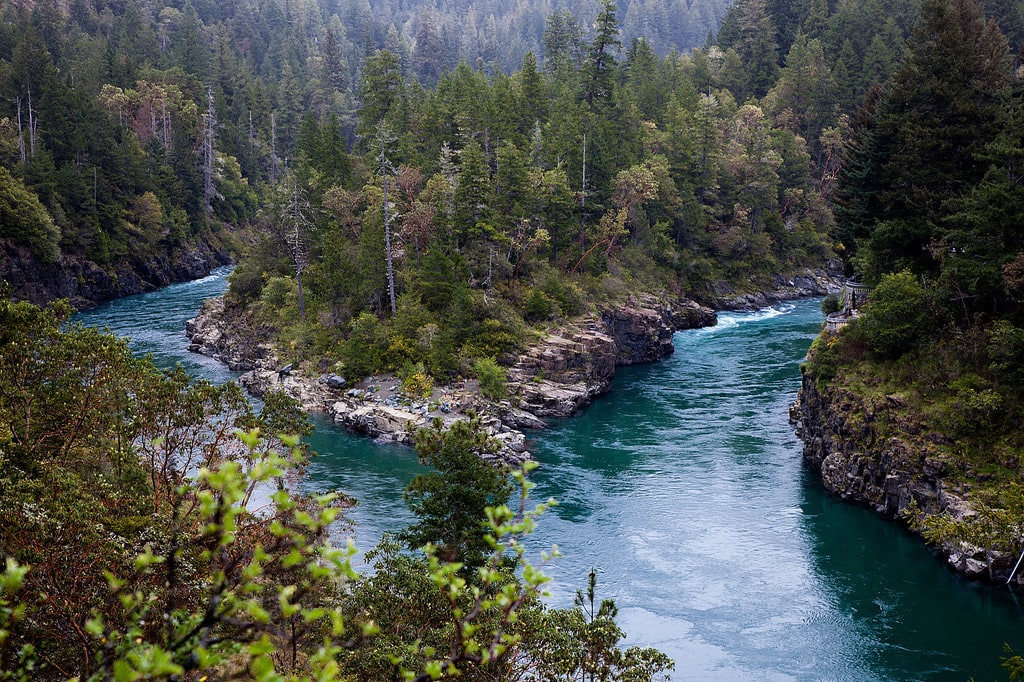
The Smitty
Beginner’s Guide to Fly-Fishing and Camping on The Smith River
By Sean Jansen | Photo By Mario Vaden
 The Smith River, on our North Coast, is one of the most majestic and mystical rivers that California has to offer. Flowing from the Northeast portion of Del Norte County, the Smith reaches the mighty Pacific Ocean just ten miles north of Crescent City, making it the northernmost major river in the state. It is also the only major river in the state that remains undammed, which allows it to return unhindered to its natural brilliancy after storms. As an added perk, it flows past the most incredible species of tree the world has ever seen: the Redwood.
The Smith River, on our North Coast, is one of the most majestic and mystical rivers that California has to offer. Flowing from the Northeast portion of Del Norte County, the Smith reaches the mighty Pacific Ocean just ten miles north of Crescent City, making it the northernmost major river in the state. It is also the only major river in the state that remains undammed, which allows it to return unhindered to its natural brilliancy after storms. As an added perk, it flows past the most incredible species of tree the world has ever seen: the Redwood.
The Smith is laid out like some miraculous gift from nature, perfect for a scenic drive or a fly-fishing and camping expedition. As it turns out, the river offers all of these, sometimes all in the same location. For the adventurous among us, the north fork of the river is a promising destination. It is accessible only by foot, via a hiking trail off of highway 199 about two miles west of the town of Gasquet. If you’re up for the hike, it will take you roughly eleven miles northward through the Smith River Recreation Area before landing you on the north fork of the river, very close to the Oregon Border. If this type of camping isn’t your style, not to worry—the middle and south legs of the river are vehicle accessible, with campgrounds dotting their shores from the river mouth all the way up into the source of the two forks.
The middle fork of the Smith boasts five different campgrounds. Three of these are federal campgrounds, which means they offer minimal or no services like running water or toilets. The remaining two sites are state parks—one in the dunes along the beach near the mouth of the river, and the other along highway 199. Both have decent services, but are unfortunately quite expensive. While the state park prices are certainly a turn off, in my opinion they offer a much more scenic experience.
The south fork’s sole campground is off a road just east of Hiouchi. The campground is at the very end of the road, about ten miles along the river.
Out of all of these campgrounds, the most incredible to me is Jedediah Smith. Here, you sleep underneath giant redwood trees that run right up along the river, making it a spectacular scene for fishing. Fishing in the Smith can be a blast. However, any local fisherman can tell you that it can also be supremely frustrating. Of course, the natural beauty of the area itself can be rather distracting, for lo and behold, the moment you look up to admire the trees is right when a fish is bound to strike.
The river, for the angler lucky enough to hook a fish, holds the state’s largest steelhead trout, as well as the second largest king salmon (also known as chinook salmon). Twenty-pound steelhead, and thirty- to sixty-pound king salmon can be caught on the regular during the right season. The steelhead fishing season on the river is from December to March, peaking in January; the king salmon run is from late August through December, with its peak catch in November. And if these species are not of interest to you, there are certainly others you can target. For example, silver and coho salmon also run in the river during the same time as the kings, as well as coastal cutthroat trout that you can catch year-round.
Now that you know where and when to go, you are almost ready to grab your pole and drive up to the section of the river that appeals to you. But don’t be too hasty—you will also need a fishing license, as well as the proper salmon or steelhead report cards, depending on which species you want to target. For residents, the cost of a year-long California fishing license runs from forty-five dollars. For out-of-staters, it will set you back one hundred and twenty-three. One- or two-day licenses are a good alternative if you just want to try it out, with prices ranging from fourteen to forty-five dollars depending on your residency. On top of license fees, the cost of a salmon or steelhead report card hovers around six or seven dollars. You can purchase report cards at most outdoor stores in California.



Leave a Reply